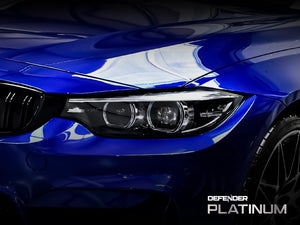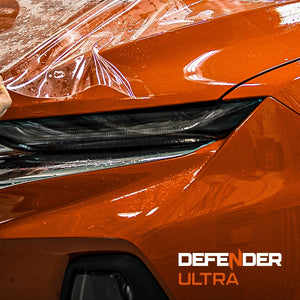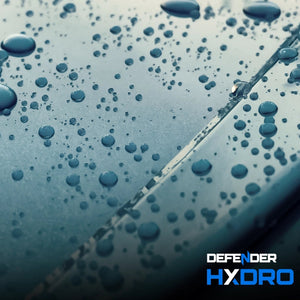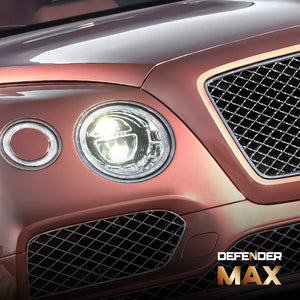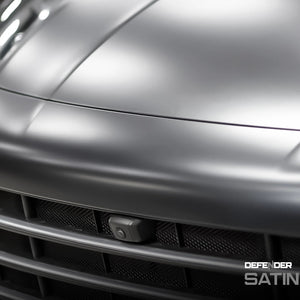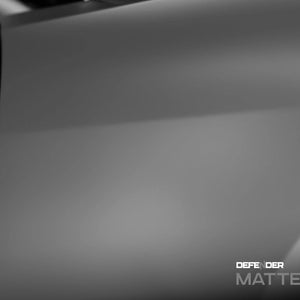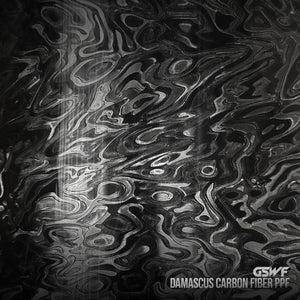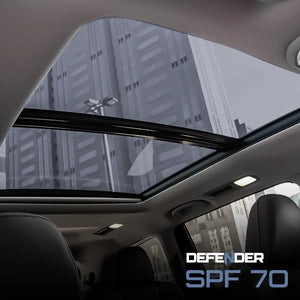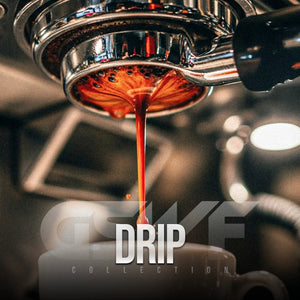
Share
Getting car windows tinted is one of those upgrades people debate for a while and then wonder why they didn’t do it sooner. It’s not only about making the car look sharper (though it definitely does); it’s also about beating the heat, cutting down glare, and protecting the interior from fading. Still, one question comes up right away: how much is it to tint car windows?
The answer? It depends. Ceramic window tint prices can swing depending on the film you choose, the size of your car, and who’s doing the work. Some jobs are quick and cheap, others cost more but last years without peeling or fading. Here’s a breakdown of what actually goes into the cost.
Window Tinting Service You Will Get
When you’re asking how much is it to tint car windows, it’s important to understand what that price actually covers. And it is also important to know what is the real ceramic window tint. The professional installation process is far more than just sticking film on glass. A decent shop will clean every window down to the smallest corner so no dust gets trapped. Then the film gets cut to match the shape of each window exactly—off by even a few millimeters, and the job will look sloppy.
Installers smooth the film on using squeegees and heat tools, working out air bubbles so it looks seamless. The best jobs look like the glass rolled off the factory line that way. Good shops also take care with trims and seals so nothing gets damaged.
You’ll usually walk out with a few instructions too. Things like “don’t roll down your windows for three days” or “don’t clean with ammonia sprays.” If the shop is confident in their work, they’ll give you a warranty against bubbling, peeling, or fading. Some even pull out a heat lamp and show you the difference between tinted and clear glass—it’s a neat way to see where your money is going.
Factors Affecting the Price of Car Window Tinting– What to Consider
There isn’t a single number for tinting because several things change the cost. How much is it to tint car windows? Film type is the biggest one. Dyed films are the cheapest fine if you only want a darker look—but they don’t block much heat and fade faster. Metallic films reflect heat better but can mess with phone or GPS signals. Carbon films are more durable, while ceramic films are the premium option. Ceramic doesn’t mess with electronics and does the best job at keeping heat out, which is why people in hotter states lean toward it.
Brand and warranty matter too. Well-known names like GSWF are built to last longer, and they back their products with warranties. Off-brand films may save you money on day one but usually don’t hold up as well. Trust GSWF for affordable prices and better qualities.
Vehicle size and design can really shift the price of car window tint. Tinting a two-door coupe with small windows is quick and cheaper. A three-row SUV with a panoramic roof? That’s a lot more glass to cover and takes extra time.
Labor skill plays a role. An experienced installer who knows how to handle tricky curves and keep dust out of the job will charge more, but the result is usually flawless. Shops offering bargain-basement deals often cut corners, and the difference shows up within a year when the tint starts peeling.
And don’t forget local laws. Every state has its own limits on how dark windows can be. A good installer knows these rules and keeps your car compliant so you don’t end up with fines or have to strip off the tint later.
Car Types and Window Tinting Prices
Not all cars are created equal when it comes to how much is it to tint car windows.
- Sedans: Fewer windows and simpler shapes usually mean lower costs.
- SUVs: Bigger glass areas and extra windows in the back quickly raise the bill.
- Trucks: Costs depend on cab size. A basic two-door truck might just tint the front windows, while a crew cab adds more surfaces.
- Luxury cars: These tend to be more expensive, not only because of size but because installers have to be extra careful with high-end trims and sensitive electronics.
That’s why two people using the same film can get very different quotes one might be driving a small sedan, the other a big SUV.
How Much Is It to Tint Car Windows – Average Price in USA
So what’s the average? Across the U.S. most tinting jobs fall somewhere between $150 and $600.
On the low end, you’ll find basic dyed films on smaller cars. Around the middle—$200 to $400 you’re usually getting a mid-range film installed professionally with some kind of warranty. At the high end, ceramic films on large SUVs can easily push toward $600 or more. Specialty films with security features might go higher still.
Here’s the thing: cheap tint often doesn’t last. The color fades, the film bubbles, and eventually it starts peeling. Then you’re paying again to remove it and redo the job. Spending more upfront for a trusted brand and a skilled installer usually means your tint holds up for years, making it the better deal in the long run.
Yes, the cost matters. But so do the benefits, and tinting adds plenty.
- Cooler interiors in summer.
- Protection from UV rays that damage skin and fade dashboards.
- Less glare when you’re driving into the sun.
- More privacy and security, since darker glass makes it harder to see inside.
- A small boost to resale value—buyers often like the look and the comfort.
For many drivers these benefits make the upgrade feel less like an expense and more like an investment.
Why Professional Installation actually Matters
This is one area where the saying of “you get what you pay for” actually holds true. Professional installers don’t just lay film on glass they know how to handle curved windows, tricky seals, and dust-free environments. The difference shows when the tint looks perfectly smooth and stays that way for years.
Shops working with premium brands like GSWF often show customers exactly how much heat and glare the film blocks. They’ll also guide you through aftercare so the tint cures properly and lasts longer.
Cheaper jobs may look fine for a month, but small details—uneven edges, dust specks, or weak adhesion usually show up sooner than you’d like. Once that happens, you’re back to square one.
So, how much to tint car windows? The answer is: it depends—on the film, the car, the installer, and even local laws. On average, expect to pay between $150 and $600. Cheaper jobs may look tempting but they usually don’t last long.

